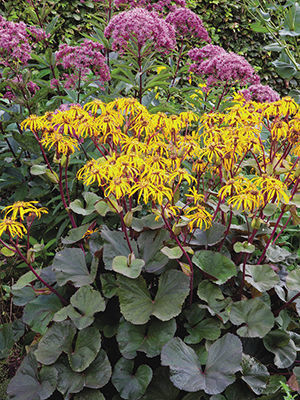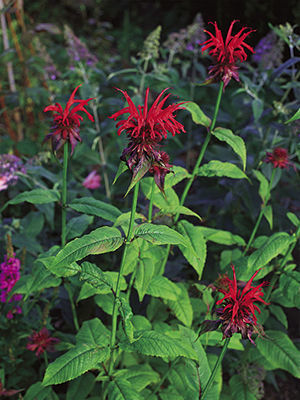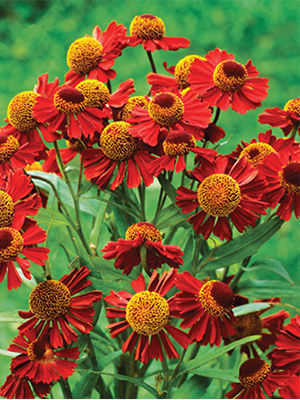1. Giant Knapweed

Name: Centaurea macrocephala
USDA hardiness zones: 3 to 7
Size: 3 to 5 feet tall and 2 to 3 feet wide
Conditions: Full sun to partial shade; moist, well-drained soil
As a beacon at the back of the garden, giant knapweed stands strong and supreme. Shiny bronze baskets overflow with fuzzlike, deep golden yellow petals. Competing with the bright sun on a late August day, its thistlelike flowers are a beautiful addition to both fresh and dry floral arrangements. As an added bonus, this plant, also called the Armenian basket flower, is a major draw for birds, bees, and butterflies. This is a truly exotic addition to any garden.
2. ‘Othello’ Leopard Plant

Name: Ligularia dentata ‘Othello’
Zones: 4 to 8
Size: 3 to 4 feet tall and 2 to 3 feet wide
Conditions: Full sun to partial shade; humus-rich, moist soil
From the edge of a partially shaded woodland stream to the side of a sunlit meadow, ‘Othello’ leopard plant demands attention. Its large elephant’s ear–like leaves, with their dark purple underside, remind me of the old-fashioned cancan dancers exposing their frilly, colorful petticoats. The daisylike, golden orange flowers emerge above the mounded skirts in midsummer. Both the flowers and the leaves make a bold statement in floral bouquets; I often use just the leaves as a skirt as well as a support mechanism for other flowers in my arrangements.
3. ‘Jacob Cline’ Bee Balm

Name: Monarda didyma ‘Jacob Cline’
Zones: 4 to 9
Size: 3 to 4 feet tall and 2 feet wide
Conditions: Full sun to partial shade; rich, moist, well-drained soil
A Northeast garden classic, ‘Jacob Cline’ bee balm is a favorite back-of-the-border accent plant. Upon close inspection, the large shaggy flowers have tubular petals that form single to double layers of bright scarlet red bursts of color, reminding me of miniature firework explosions. With edible flowers and a fragrant mint scent, you can’t go wrong with this plant. It is a favorite source of nectar for hummingbirds, bees, and butterflies, and it’s mildew resistant, too. Its flower adds a bright red splash of color to bouquets, and the petals are an attractive addition to a salad.
4. ‘Ruby Tuesday’ Sneezeweed

Name: Helenium ‘Ruby Tuesday’
Zones: 4 to 9
Size: 18 to 20 inches tall and 12 to 18 inches wide
Conditions: Full sun; well-drained soil
I often suggest ‘Ruby Tuesday’ sneezeweed to local gardeners as an addition to their garden palette for late-summer color. With deep red–burgundy petals emanating outward from a golden yellow button center reminiscent of a fine artist’s paint stroke, this hot vibrant color will extend the summer season well into fall with pizzazz. As other summer-garden favorites begin to fade, ‘Ruby Tuesday’ takes center stage, screaming, “The show must go on!” It also adds a great splash of color to floral arrangements when most other perennials are not as vibrant.
Bob Milano is the general manager of Fieldstone Gardens, a mail-order nursery in Vassalboro, Maine.
Photos: #1, Matt Lavin/courtesy of commons.wikimedia.org; #2, Elke Borkowski/gapphotos.com; #3, Jan Smith/gapphotos.com; #4, Neil Holmes/gapphotos.com

















Comments
Log in or create an account to post a comment.
Sign up Log in